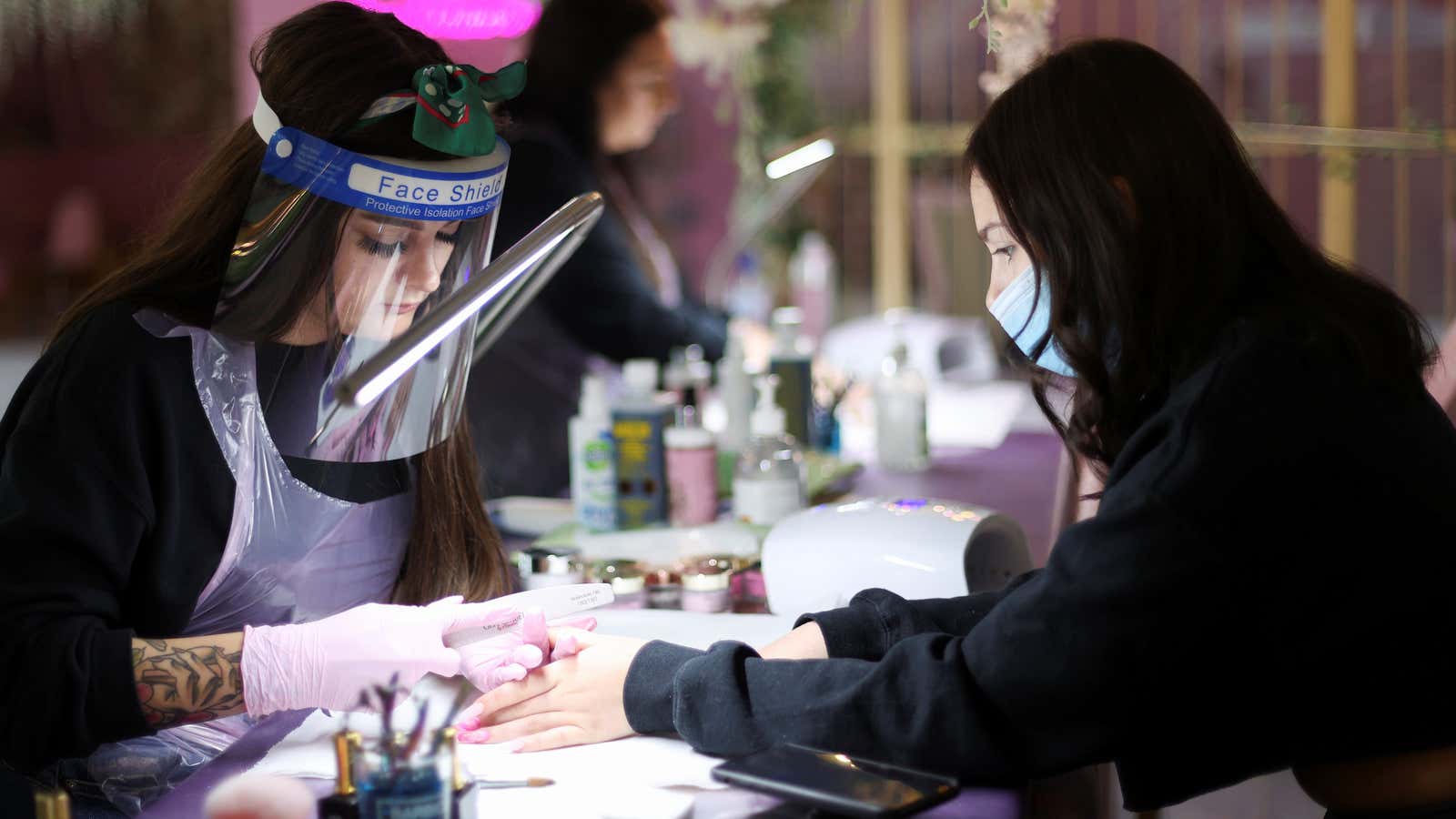Some of the very places made for relaxing and unwinding are making life worse for the people who work there. And not just because of low pay and long hours, but with toxic fumes.
Canadian nail salon workers’ exposure to toxic chemicals was 30 times higher than at home, according to University of Toronto researchers. They’re 10 times worse off, in terms of chemical exposure, than even electronic waste facilities’ employees.
Which chemicals are nail salon workers exposed to?
The high level of several phthalate plasticizers was expected given their use in personal care products. One, DEHP, is banned in cosmetics in Canada, and was found at low levels, suggesting “the current regulations for this compound are working,” says study co-author and public health professor Miriam Diamond.
However, the high levels of flame retardants took researchers aback. These chemicals aren’t typically used in personal care products, except in nail polish. Inhalation isn’t even the biggest problem with the product, US researchers found earlier, so anyone who gets a manicure might be concerned.
Fixing the nail salon air
Potentially toxic air in nail salons is nothing new, with research in the US, Iran, and other countries already pointing it out. The chemicals in question have been associated with adverse health effects, including carcinogenic, neurological, and reproductive issues.
“Nail technicians have been raising concerns about the impact of their work on their bodies, including worries about reproductive, respiratory, skin and musculoskeletal health for many years now,” says Victoria Arrandale, co-author and assistant professor at the Dalla Lana School of Public Health.
Reworking the beauty products is one ask. Another is to make the workplace itself safer. For one, keeping salons well-ventilated and having air conditioning systems with clean filters helps. Wearing nitrile gloves and face coverings are other precautionary measures.
Researchers are also finding unique solutions, such as placing large activated-carbon sinks in salons to remove volatile organic compounds from the air, or embedding these chemical-absorbing materials into pieces of wall art.
